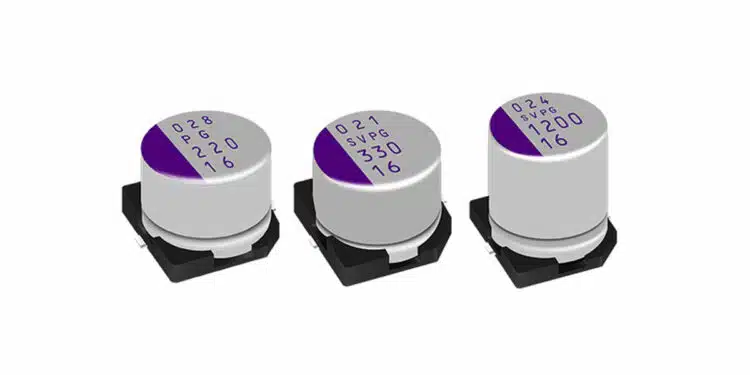New Panasonic Industry SXV, SXE, and SVPG series deliver superior durability, low ESR, high ripple current, and increased capacitance, setting a new standard for industrial power supply applications.
Panasonic Industry Europe announces the expansion of its renowned OS-CON aluminum polymer solid capacitors, introducing the latest members of the product lineup: the SXV, SXE, and SVPG series. These new capacitor families are designed for surface mount and radial lead applications, offering remarkable performance improvements that meet the evolving needs of industrial applications.
SXV and SXE Series: Enhanced Performance for High-Density Mounting
The OS-CON SXV (surface mount type) and SXE (radial lead type) series capacitors are engineered to deliver superior durability and efficiency, featuring remarkable equivalent series resistance (ESR) even at low temperatures. Both series boast a high-temperature endurance of 1,000 hours at 125°C and operate within a wide voltage range of 63V to 100V. With enhancements to the aluminum foil, these capacitors offer a capacitance increase of up to 20% compared to competitors in the conductive polymer aluminum solid capacitor category. This advancement enables improved functionality and miniaturization, making them ideal for high-density mounting in power supplies, solar inverters, measuring machines, servers, and base stations.
SVPG Series: Reliability and Low ESR for High Ripple Current Applications
Complementing the SXV and SXE series, the OS-CON SVPG series introduces a line extension available in 20V and 25V ratings, designed for long life with an endurance of 5,000 hours at 105°C. With the extended voltage range, it is an ideal capacitor for smoothing 12-15V power lines that require high ripple current. The SVPG series is specifically formulated to provide low ESR and high ripple current handling, achieving an average ripple current increase of 1.37 times compared to competitors. This makes the SVPG series an excellent choice for power supply circuits that require reliability under high ripple conditions.
The SVPG series is suitable for a variety of demanding applications, including industrial power supplies, AI accelerators, industrial automation, and data centers.
All new capacitors in the OS-CON lineup are halogen-free and RoHS compliant, ensuring they meet the highest standards for safety and environmental responsibility.































